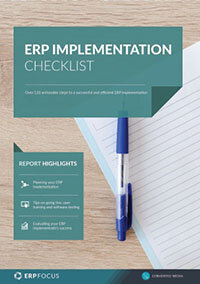How to Utilize Job Management in Manufacturing ERP
Jobs are a basic concept in the setup of ERP systems for many businesses. We often think of a job as a batch of production in a small “job shop” kind of business but job is a much bigger concept. Yes, it certainly can be a batch of production for a particular customer order. It also can be a small batch of production to put a handful of product on the shelf for sale. It can be a million basketballs made over months for next Christmas sales. A job can be a project to develop software or the construction of a hotel building.
Job is simply a word we use to collect physical production and the related data. Some might call it a work order or a production order or many other terms. But whatever you call it, it forms the spine of any manufacturing ERP system.
Integrated and Automated
We issue component materials from inventory and charge labor time to a job. The money accumulated under the job number is work in process inventory. When the job is complete, the accumulated costs move to finished goods inventory or directly to cost of sales when the job supports a customer order. This should all be included in your ERP job management processes. It should be integrated and automated.
The ratio of load to capacity is directly related to jobs and is an important KPI for to monitor within any manufacturing ERP system
You can use ERP job management for scheduling people, equipment and resources needed for production of the job. Usually a resource can only work on one job at a time so other jobs that need the same resource must be scheduled at some other time. The total hours scheduled for a resource is called its load. The same resource has a capacity or the number of hours it is available for scheduling work. The ratio of load to capacity is directly related to jobs and is an important KPI for to monitor within any manufacturing ERP system.
Most businesses will estimate the time and component materials required for a job. Time is based on the engineering standards for work and material is based on a standard or average cost for the material as we charge actual time and materials against the job, we can now compare actual costs to budgeted costs for a particular job and for the total of all jobs in a time period. This analysis is an important part of financial controls for the business. The analysis also can lead to improved estimates. In a perfect world, the engineer estimated a task should take 2.4 hours. After observing real-world data over many jobs, we might see that people consistently can finish in 2.1 hours so we have an opportunity to reduce future job estimates or to pocket more future profit at our choice.
What can you gain through better use and analysis of jobs through ERP job management? The sky is the limit!
Free white paper

Manufacturing ERP: 10 steps to success
Complete step-by-step guide to manufacturing ERP software

Featured white papers
-

Manufacturing ERP: 10 steps to success
Complete step-by-step guide to manufacturing ERP software
Download -

ERP Implementation: 9 steps to success
The 9 proven steps you should follow when implementing ERP
Download -

ERP Implementation Checklist
Over 120 actionable steps to implementing a new ERP successfully
Download
Related articles
-

3 New Year's Resolutions for Your Discrete Manufacturing ERP Project
Getting the best from your manufacturing ERP for the new year.
-

Secret KPI: Why Your ERP Implementation Team Matters More Than Software
Learn how Godlan ensures successful ERP implementation for manufacturers with proven strategies &...
-

ERP for make-to-order manufacturing
How can ERP help your make-to-order manufacturing business thrive?

